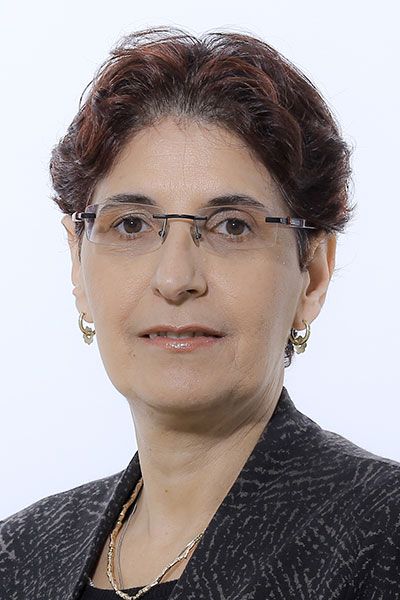- Center on Health Equity & Access
- Clinical
- Health Care Cost
- Health Care Delivery
- Insurance
- Policy
- Technology
- Value-Based Care
Why Time in Range Matters for Diabetes Care Beyond A1C
Panelists at the American Diabetes Association 83rd Scientific Sessions explained how time in range is emerging as a crucial target in diabetes management.
Time in range (TIR) is emerging as a crucial target in diabetes management, as emphasized by panelists at the American Diabetes Association (ADA) 83rd Scientific Sessions.
Although hemoglobin A1C has long been the gold standard for assessing glycemic control; it represents a retrospective average over 8 to 12 weeks. In contrast, continuous glucose monitoring (CGM) provides real-time data, offering a more comprehensive view of glycemic control.
Revital Nimri, MD

Revital Nimri, MD, director of the scientific and technology diabetes service at The Jesse Z and Sara Lea Shafer Institute for Endocrinology and Diabetes, Schneider Children’s Medical Center of Israel, emphasized the importance of CGM metrics, like TIR, in providing personalized care.
“Now that we can see the glucose record in detail, we realize that A1C is not the entire picture,” said Nimri, according to an ADA news release. “The same A1C can represent enormous differences in glucose and glycemic control. CGM and CGM metrics, including time in range, are increasingly popular to assess glycemic control in clinical practice and in research, and enable more personalized care.”
TIR and other CGM metrics offer valuable insights into an individual's glycemic status and can predict hypoglycemic events, track within-day and day-to-day fluctuations in glucose levels, and detect patterns related to medication, diet, and lifestyle activities. The data collected by CGM can also provide new opportunities for analysis.
Nimri added that there is growing evidence supporting the positive impact of greater TIR on reducing the risk of long-term diabetes complications. According to Nimri, CGM can be employed in clinical settings to assess and manage glycemic control effectively, either alongside A1C or alone.
The FDA is supportive of using TIR and other CGM metrics. Patrick Archdeacon, MD, deputy director of the Diabetes, Lipid Disorders, and Obesity Division of the FDA, stated that there is very robust evidence of CGM improving glycemic control.
Patrick Archdeacon, MD

“And there is increasing evidence that CGM can improve outcomes in patients who are not using insulin,” Archdeacon added. “We need to do a better job of incorporating CGM in clinical trials.”
To encourage the use of CGM in clinical trials, the FDA issued draft guidance in May 2023 for diabetes, providing end points for investigating antidiabetic drugs and biological products. The draft is open for public comment until August 24, 2023.
The panelists added that CGM can complement traditional models of care that rely on quarterly visits with A1C checks. By providing real-time data and actionable insights, CGM helps patients understand the impact of various factors on their glucose levels, and therefore helps them make informed adjustments to improve their TIR. According to recent blinded studies, many people with diabetes have as few as 8 to 9 hours per day in range, on average.
Daniel DeSalvo, MD

Further, managing diabetes goes beyond just food and medication, as emphasized by Daniel DeSalvo, MD, lead of the type 1 diabetes clinic and director of strategic collaboration for the Texas Children’s Diabetes & Endocrine Care Center, and co-lead of the diabetes transition clinic at Texas Children’s Hospital.
“CGM can be a heuristic learning tool that helps patients learn cause and effect in their own daily lives and make adjustments to improve TIR,” DeSalvo said. “CGM can help us move away from the current model of wide glycemic variability to a narrow range.”
Additionally, while cost and coverage are significant considerations, viewing TIR updates on smartphones can inform and guide daily actions and decisions. As noted in the ADA news release, multiple programs now integrate CGM data into electronic health records and clinical practice, streamlining patient care and improving decision-making for health care professionals. One of these is endo.digital, which DeSalvo said was used as a standard approach at his practice during the COVID-19 pandemic; similar systems are seeking FDA approval.
Kelly L. Close, MBA

Patients also find CGM to be compelling. Kelly L. Close, MBA, founder and president of Close Concerns—a health care information firm focused on diabetes—emphasized that CGM metrics contribute to improved safety and longer, better lives for patients. During the panel, she also predicted substantial growth in CGM usage, as there are around 6.7 million CGM users worldwide, marking an 8-fold increase since 2017. However, there are nearly 70 million people taking insulin who could benefit from CGM, she said.
“For anyone on insulin or sulfonylureas, CGM is the standard of care,” Close said, adding that every 5% decrease in TIR is linked to a 16% increased risk of developing diabetic retinopathy.
According to Close, using CGM alongside glucagon-like peptide-1 receptor agonists and sodium-glucose cotransporter-2 inhibitors can improve glucose management and help protect against hypoglycemia for patients also using insulin or a sulfonylurea. With its ability to provide real-time data and personalized insights, TIR through CGM is becoming an increasingly vital tool in diabetes management, offering the potential to enhance patient outcomes, reduce the risk of complications, and optimize care delivery.
“The impact of TIR has barely scratched the surface of what is possible,” said Close.
Reference
Time in range becomes an increasingly important diabetes target. News release. American Diabetes Association. July 25, 2023. Accessed August 2, 2023. https://www.adameetingnews.org/live-updates/session-coverage/time-in-range-becomes-an-increasingly-important-diabetes-target/
Preventing Tomorrow’s High-Cost Claims: The Rising-Risk Patient Opportunity in Medicaid
November 6th 2025For Medicaid care management, focusing on rising-risk patients is more effective than targeting high-cost claimants, whose spending tends to decrease over time due to regression to the mean.
Read More
